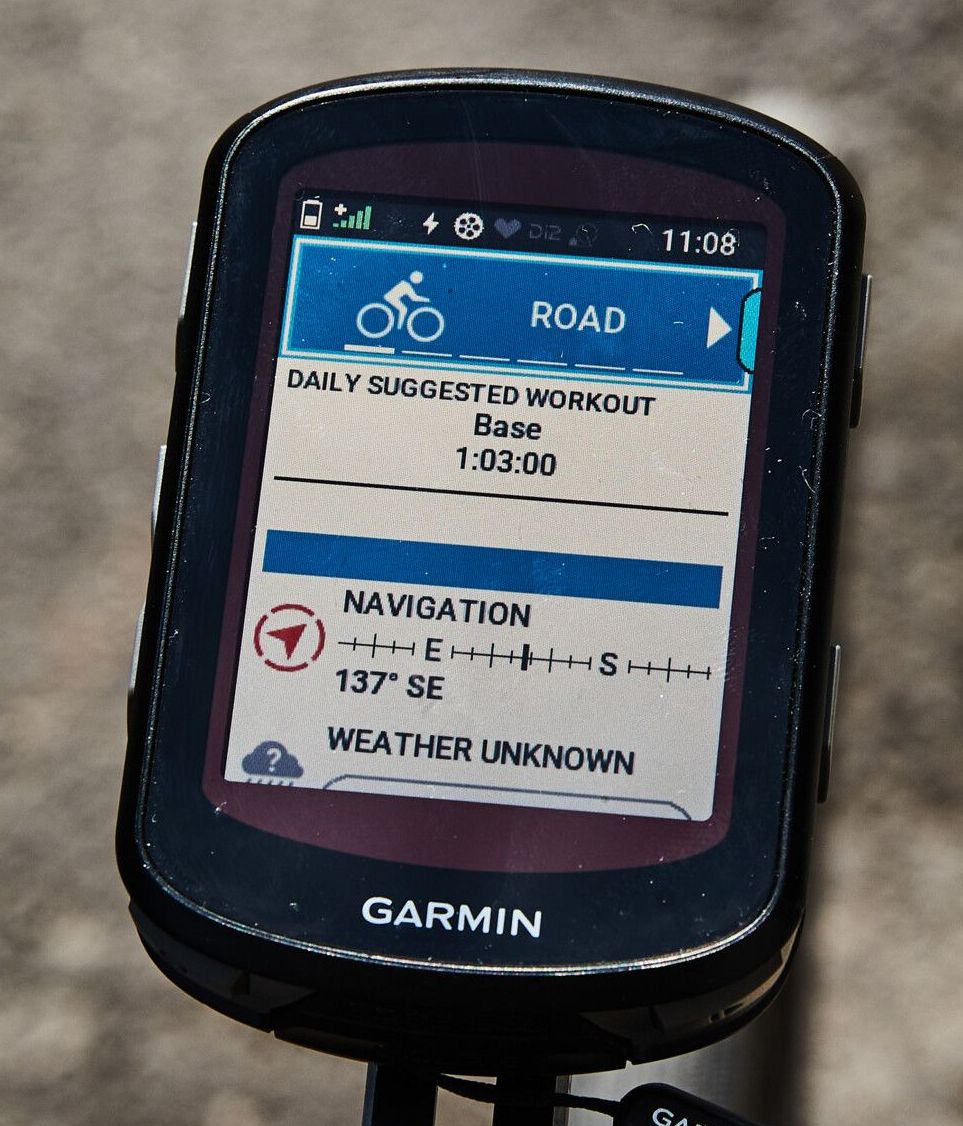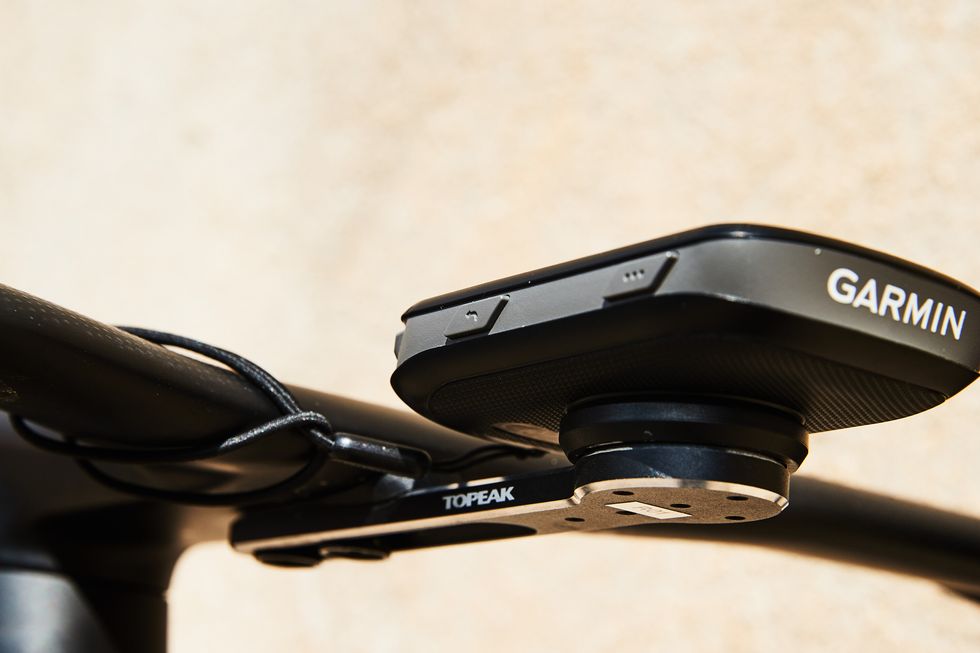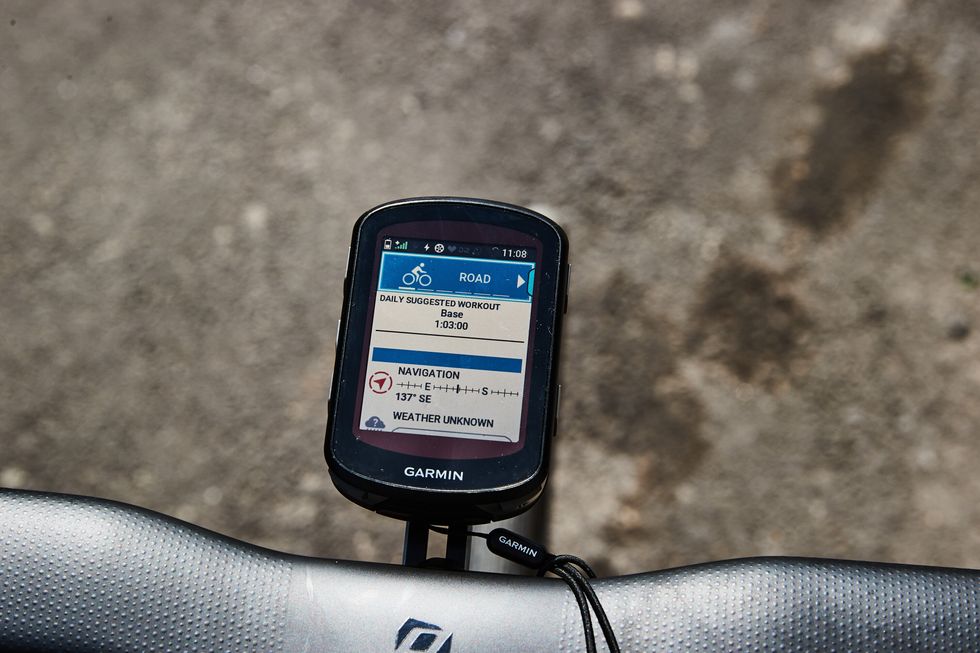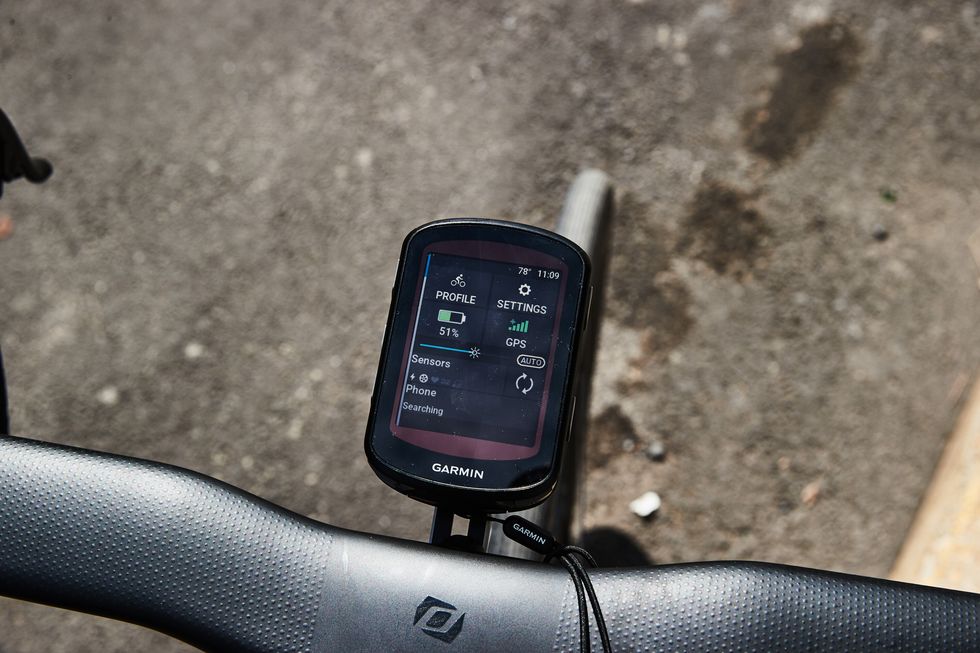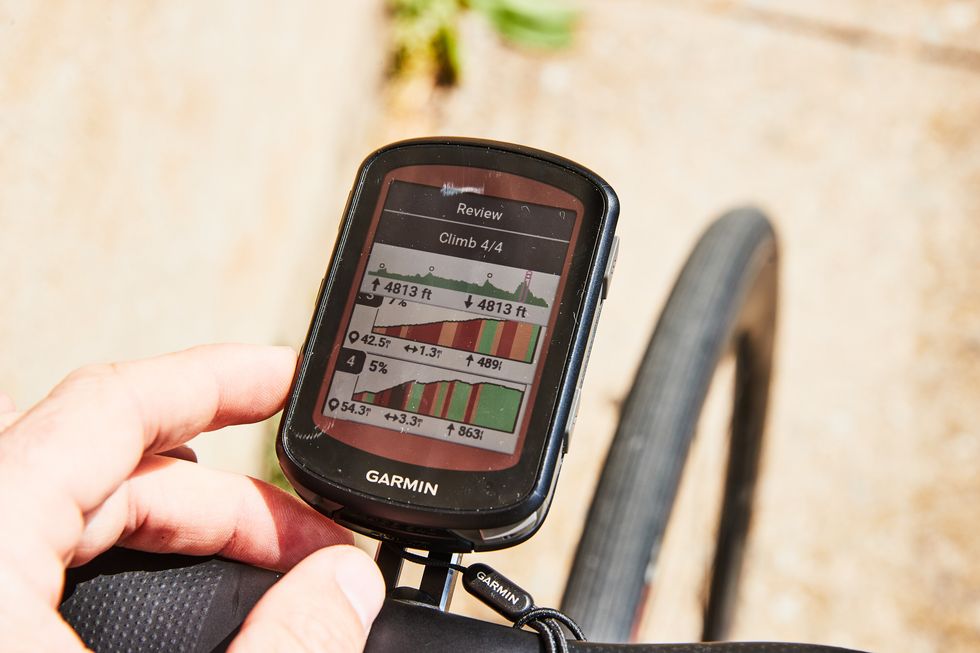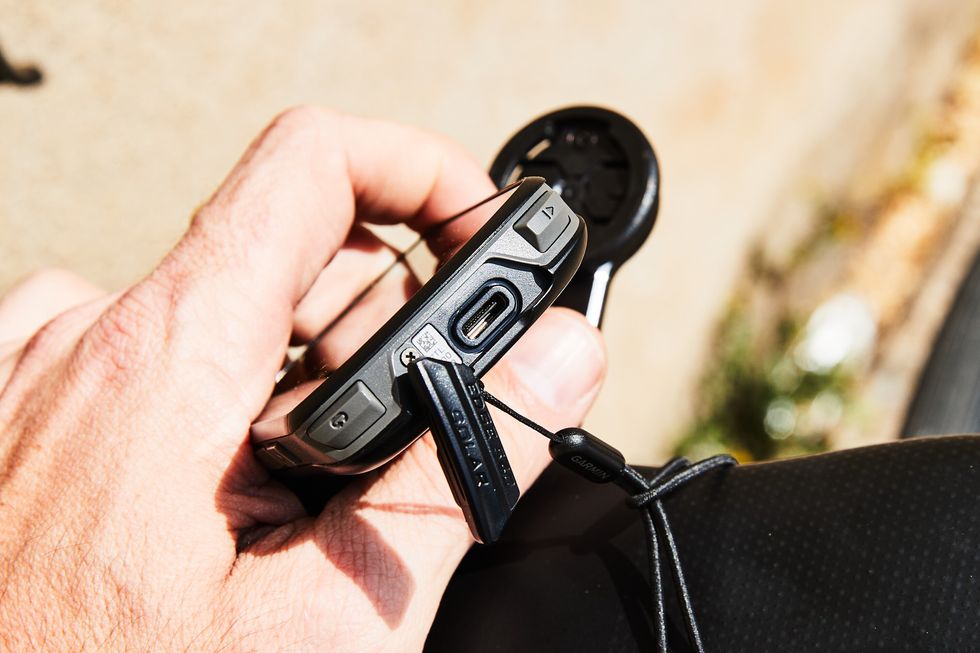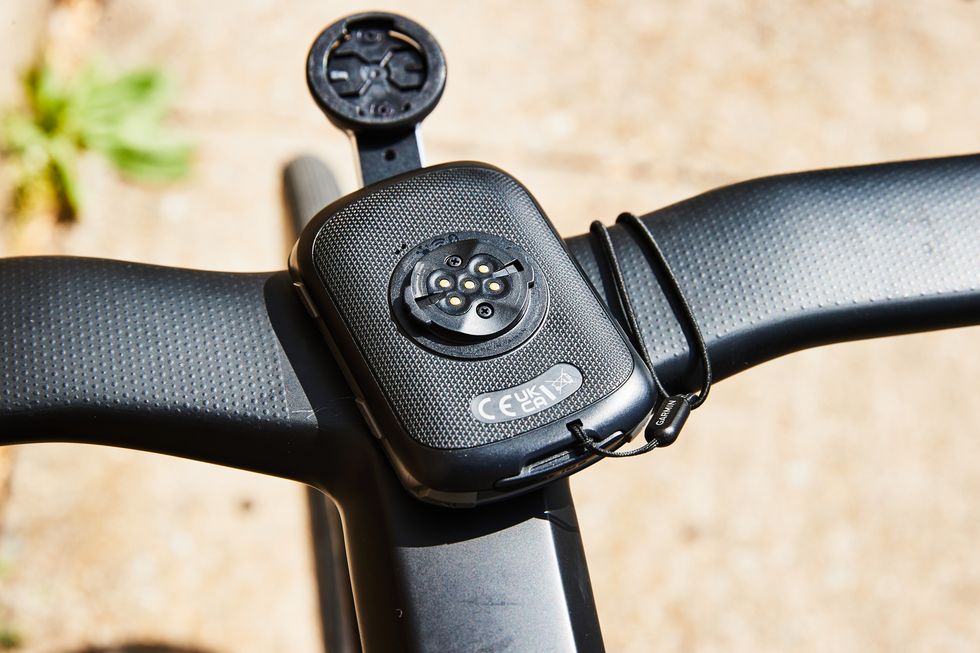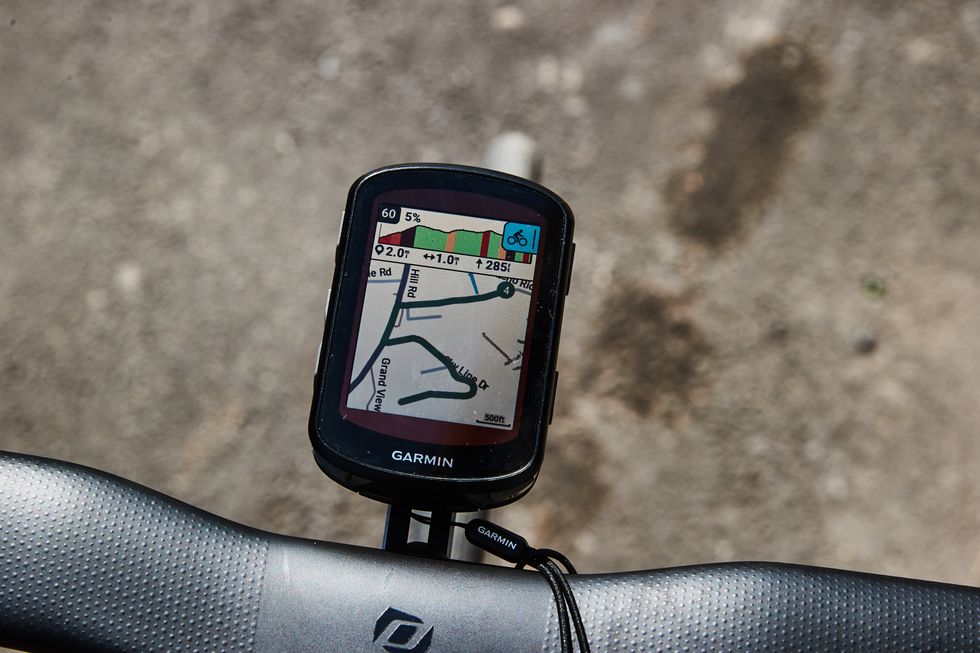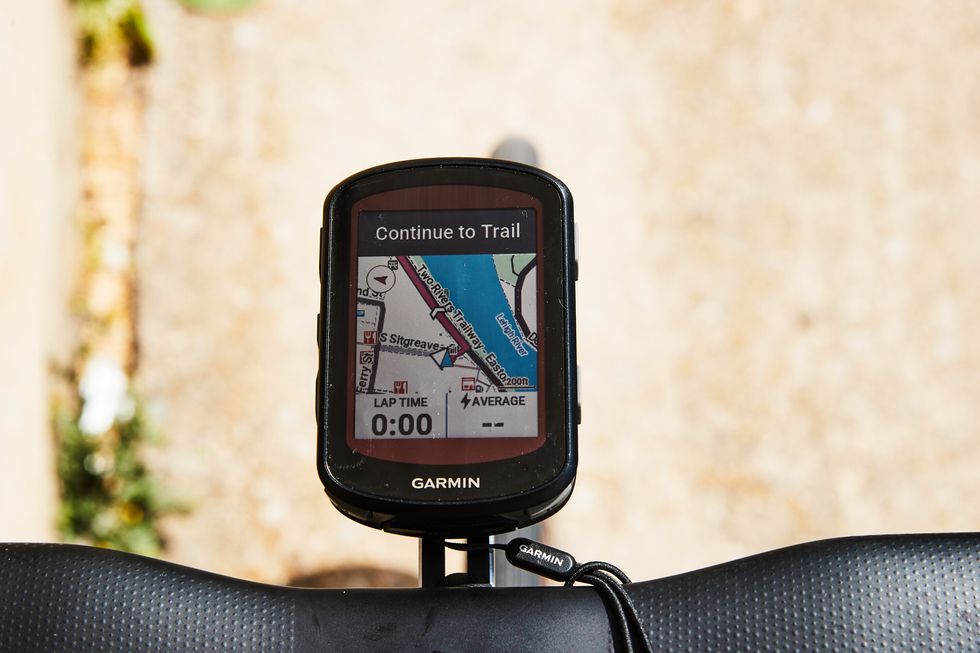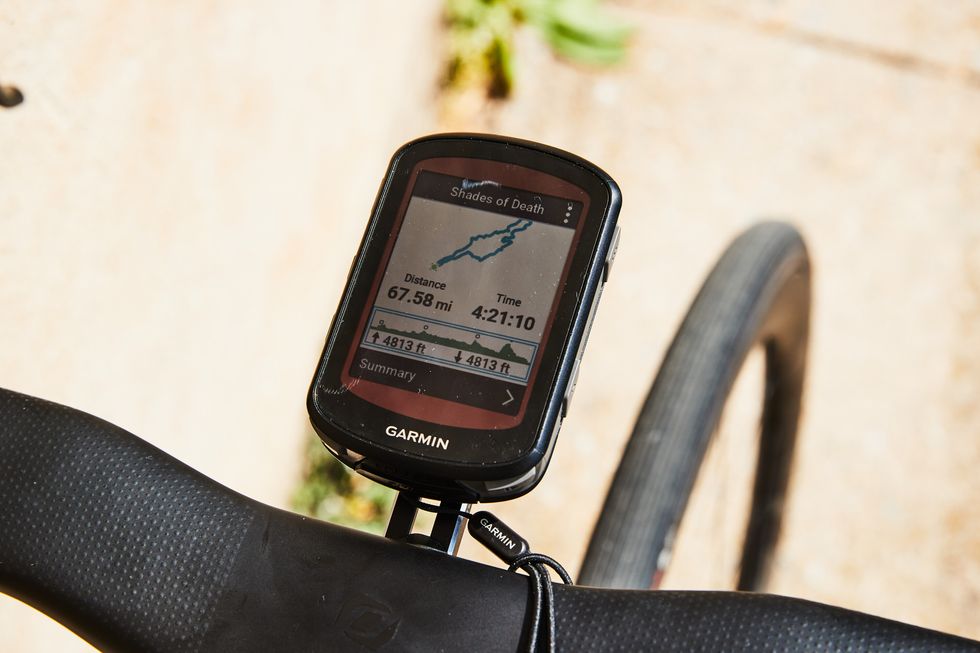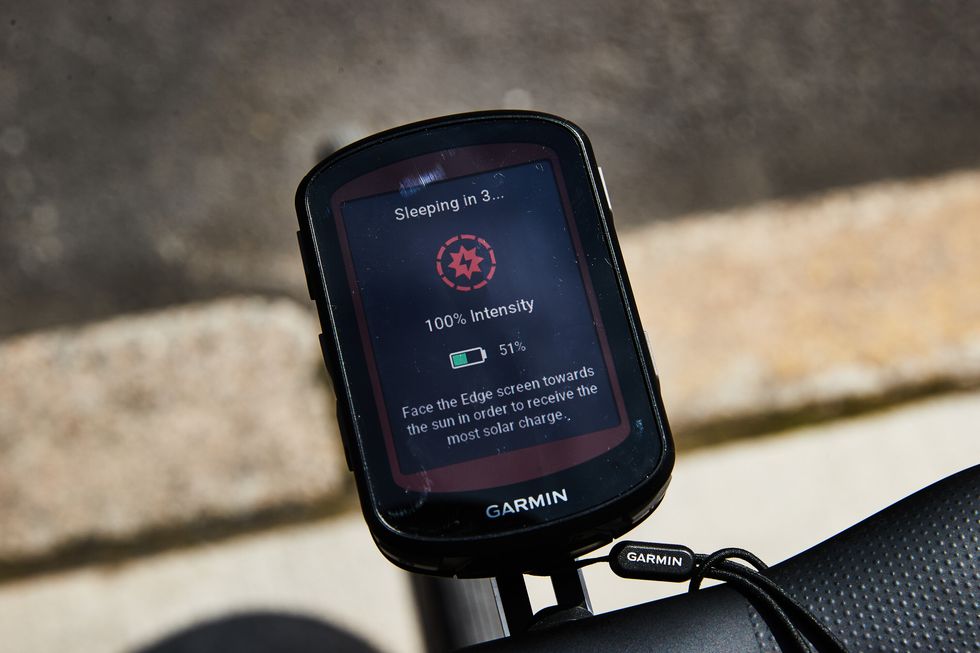TESTED Garmin’s Solar-Recharging 540 and 840 Devices
Testing Garmin's new 540 left us wanting more. It's a brilliant machine, but you might want its big brother. And the solar bit is AWESOME.
Takeaway: With healthy battery life, solar charging, compact size, customisable features, and turn-by-turn navigation, Garmin’s new Edge 540 Solar is a strong choice for riders that hate charging devices, need extra long range for truly epic rides, accepts Garmin’s UI, and like button-only controls. However, the lack of a touchscreen display and somewhat clunky navigation of systems menus can make for an (at times) frustrating user experience. If you need a touchscreen device, go for the 840 Solar.
Price: From R10 799
Weight: 86 grams
For my personal choices of electronic cycling equipment, I often avoid updating to newer platforms or changing brands. This isn’t so much a resistance to the technology or its merits to better the quality of my rides, it’s simply because I dislike learning and adapting to new systems all over again. As such, I tend to run devices into the ground until their respective brands stop updating software or the device finally stops working (or I break them in a crash).
Other primary determining factors in my choice of cycling tech (such as computers) are ease of use, clear display of metrics, durability, and battery life. And battery life is particularly what drew me to wanting to test Garmin’s latest release. While I am not one for super long-distance rides or multi-day backcountry trips where battery longevity is a concern, I appreciate lengthy run times as someone who consistently forgets to charge devices (head units, watches, AXS or Di2 batteries, power meters, etc).
The Edge 540 Solar carries a claimed 42-hour run time in battery-saver mode (26-hour in intense mode) and the ability to add 25 minutes per hour of solar charging during daytime rides (bumping total potential battery life to 60 hours in saver or 32 hours in intense). This makes the 540 Solar a tantalising proposition for my device charging forgetfulness.
Basics of the 540/840
The latest product release from Garmin isn’t only one new Edge model but four distinct models. For those unfamiliar with Garmin’s product range, here is a quick primer:
Edge 540 models are a stripped-down version of the Edge 840. The Edge 840 features a touchscreen colour display and control buttons while the 540 is button control only. Additionally, at 32GB the 840 has double the memory compared to the Edge 540’s 16MB capacity. Lastly—and of importance to mountain bikers and gravel riders—the 840 models come with Trailforks trail maps preloaded and unlocked on the device. Whereas for the 540 variants, users must install the Trailforks app via Garmin’s Connect IQ store, and then download the maps to their devices.
The most interesting bit of tech is the addition of optional solar charging for both units. Debuted in June 2022 on Garmin’s Edge 1040 model (Edge 540/840’s larger-sized sibling), this solar charging feature (potentially) adds a lot more battery life to the Edge’s already robust battery life.
Compared to the previous generation 530 and 830 models, the non-solar versions increase by R1 000-odd in price. Solar charging costs around R2 000 extra. Bundle options with accessories (such as a heart rate monitor, cadence sensor, and mounts) are also offered.
Edge 540: R8 599
Edge 540 Solar: R10 799
Edge 840: R10 799
Edge 840 Solar: R12 899
The Edge 540/840 platform is a mid-sized cycling computer and its outer dimensions increase by a few millimeters (to 57x85x20mm) versus the previous generation. Screen size stays the same at 2.6 inches/6.6cm. Our 540 Solar sample weighs in at 86 grams. I timed start-up (from fully powered off) at about 15 seconds on the 540 Solar.
Changes and Updates
Beyond the increased battery life and solar options, the Edge 540/840 models see several other important updates throughout the platforms. As predicted by my colleague Matt Phillips in his print review of the Edge 1040 Solar, Garmin rolled many of the big updates from its flagship 1040 unit into the smaller, lighter-weight, and less expensive models. Below are some of the biggies.
User Interface and Set-Up Improvements
Garmin added the capability to customise data screens and control user settings on the 540/840 directly from the Garmin Connect smartphone app. And for users of previous-generation Edge devices, this alone might be the best reason to upgrade to the new models.
Making adjustments to your device settings is now a lot more user-friendly and efficient. When your phone is paired with the Edge 540/840 device, setting changes are simultaneously made on the device, and with virtually zero lag. Almost every adjustment to the display can be done on the Garmin Connect app, which is laid out much more intuitively (at least on the iPhone app; I didn’t try with Android) than trying to make the adjustments from the device. Though perplexingly, a new activity profile can only be created on the device itself.
Satellite Connections
Edge 540/840 models all see an update to multi-band GNSS connectivity. Meaning, your Garmin pulls signals from an array of satellites instead of only GPS. This increases navigation accuracy and also reduces your chance of dropping a signal due to tree cover, tall buildings (like in a city), or other natural features. Based on my test riding, the Edge 540 found a signal even when indoors, and I never noticed a dropout while on rides.
ClimbPro
Similar to the Climber feature on Hammerhead computers, Garmin’s ClimbPro is now predictive and no longer requires following a course to see the upcoming climb’s data. Another nifty feature is the Edge’s Climb Explore navigation page. Want to find the most challenging climbs in your riding area? Just pick the one you want and your Garmin will route you to it.
Compared to Hammerhead’s Climber, ClimbPro is a little less graphic-intense (it doesn’t divvy climbs into as many coloured segments) but the two seem to operate almost identically. I found ClimbPro somewhat more sensitive (you can adjust it to only activate on steeper pitches), but also the notifications are more disruptive than Climber and a slight pain in the ass to clear away (just swipe down on the Hammerhead for example).
Training, Coaching, Stamina, Power
The Edge 540/840 series has a laundry list of other features to help you get fitter, follow a training plan, monitor your real-time stamina, and meter your power over a course. There are so many granular details to these features that I did not have sufficient time to try them all out. I did try the adaptive coaching feature, which pulls data on fitness and recovery from your previous rides, along with info on future goals, to construct a recommended daily workout. The provided workout was easy to follow and (given more time with the device) is a feature I might use more in the future.
Charging and Power Supply
Charging of the Edge 540/840 was improved (beyond solar) with a change to USB-C. This makes charging the device super straightforward. Included with the device is a USB type A to USB-C cable if you don’t have one already. After initially charging the device to 100%, I usually just let the sunbeams do their magic to help add some extra battery percentage throughout the day. And with that, I very rarely plugged it back in for a cabled charge.
Even if you opt for the non-solar Edge 540/840 versions, you will see a big improvement in battery life compared to the previous models. The non-solar models receive 30% (claimed) additional battery life in the full power settings. If you add on the maximum solar charge, that jumps to a 60% increase.
Construction
Unlike updates to the Edge 1040, the 540/840 did not receive the snazzy-looking aluminium mount on the case. Given the price difference between the platforms, this was not an expected update but would have been a nice addition. Instead, the mounting tab on the back is now removable. This should comfort riders who have damaged or snapped off the plastic ears of a computer mount in a crash. The rear of the case has a knurled texture, which should help when handling it off the bike with sweaty hands or on a rainy day.
Riding with the Edge 540 Solar
Set-up
Upon receiving press info about the new devices from Garmin, I was immediately interested in trying out the 540 Solar. While I was very happy with the performance and customisation (both to the system and the exterior) of the Hammerhead Karoo 2 I used for over a year, I was interested in a more compact (for mountain biking) and lighter weight (for road racing) cycling computer. And with the bonus of extended battery life and solar-powered charging, the Edge 540 Solar seemed to tick each of the right boxes for me.
Setting up the 540 was straightforward (although I accidentally got the device stuck in Arabic within the first two minutes of powering it on—Google Translate to the rescue!) Pairing and adjusting initial device settings through the Garmin Connect app was relatively painless, and the device was quickly ready to ride. But soon the frustration set in.
Interface
While I have used Garmin cycling computers for many years (back to the Edge 305 circa 2007), I had forgotten how maze-like and confusing the Edge user interface could be. The sheer amount of possible measurements, data, analytics, and graphic displays of information available on the Edge 540/840 is mind boggling. And truthfully, it can be overwhelming for many riders—including me who, while not a technophobe or novice cyclist, was often left scratching my head about what a potential metric might mean or how it benefits the rider. Garmin’s new app-based access to setting up these interfaces is a huge improvement and will let you reduce potential on-the-bike befuddlement – just set up what you want to see riding, and check out all the other metrics once you have downloaded the file.
Trying to manage those data streams while riding, on a 2.6-inch display, without a touchscreen, and with numerous alerts constantly popping up on the screen requires patience, but the Connect app interface has made living with the 540 better than any Garmin predecessor. Controls for the settings are far more intuitive and logical in the app than on the device and changes push automatically to the device. There is still a bit of a learning curve on-the-fly, until you have full handle on the quickest way to toggle through the buttons and get to where you need to be, but it is totally manageable (and if you want touch-screen convenience, there’s always the 840 waiting for you, rather).
Navigation
In addition to all of the data and metrics measurement capabilities of the Edge 540, let’s not forget that the device’s equally important role is navigation.
Loading and following preset courses with the 540 is simple: 1) link your Garmin account with services like Strava or Komoot, 2) build or favourite a course on those third-party sites (or build one on Connect), 3) turn on your 540, 4) sync with Connect, 5) follow the course.
The 540’s navigation is strong but not without its quirks. The device usually provided ample warning of upcoming turns (though on fast descents I did outpace the directions on a couple of occasions) along with a “time to point” cue. I did find it peculiar that on one occasion when I purposely began a route by turning the wrong way, the 540 did not tell me to turn around for about a kilometre and a half. This is not unique to Garmin, and will probably get better as software updates upload, and as more people ride the areas I ride in.
Navigating with the device’s map while on a ride is always going to be more challenging than with the bigger touch-screen devices – and if one of your main reasons for buying a computer is for real-time nav, the 840 will be a far better option. 540 navigation can be done, but it requires a little more patience as searching on the map necessitates many clicks instead of just pinching, zooming, and swiping.
Mapping and navigation help to bail you out when you take a wrong turn, break a bike part and need to cut a ride short, or get caught out too close to sunset. In these situations, having an accurate “back to start” or “back to home” feature comes in handy. The 540 handles both more than adequately, but again spending the extra few bob on the touchscreen option makes it a far better experience.
Should You Buy an Edge 540 Solar?
It is not that the Edge 540 Solar is a bad computer; quite the contrary: for the right rider this is the absolute-perfect device. It has so many ways to measure and display data that it would take countless hours of riding time to try every combo. And that is appealing to many riders—to have the data they know and need now, but whatever possible data or measurements they might want down the line.
While I think button-only controls on such a feature-rich device are cumbersome and a bit dated, I understand that many riders prefer the simplicity and reliability of buttons. For those riders, the Garmin 540 is a fine device. But if you prefer touchscreens the 540 will leave you frustrated: spend the extra R2k for the 840 and get the Trailforks maps.
The Edge 540’s biggest issue is usability. Garmin packed the 540 to the gills with just about every software feature and setting imaginable. But it didn’t give the user a simple or intuitive hardware interface to navigate through those many options. Stripping down the software (with the option to add features with Garmin Connect) to match the usability and practicality of the button controls would make the 540 a lot easier to use.
In a nutshell, my experience with the Edge 540 Solar left me underwhelmed (let me qualify that – it is a great computer! Big brother 840 is just more user-friendly if on-the-bike fiddling is what you want) , but importantly now also underwhelmed by my favourite cycling computer. I want a smaller, lighter Hammerhead Karoo 2 with better battery life, solar charging, and quicker operation. Basically, I want an Edge 840 Solar.
READ MORE ON: edge devices garmin edge garmin solar new products solar charging tested



